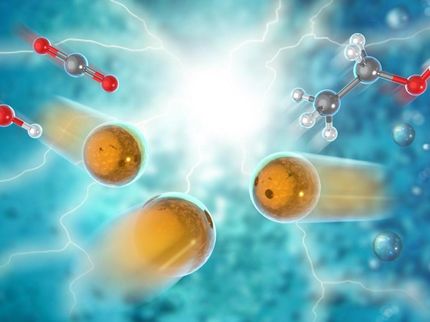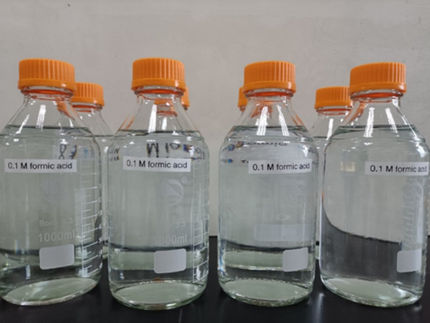New process yields high-energy-density, plant-based transportation fuel
A team of University of Wisconsin-Madison engineers has developed a highly efficient, environmentally friendly process that selectively converts gamma-valerolactone, a biomass derivative, into the chemical equivalent of jet fuel. The simple process preserves about 95 percent of the energy from the original biomass, requires little hydrogen input, and captures carbon dioxide under high pressure for future beneficial use.
With James Dumesic, Steenbock Professor of Chemical and Biological Engineering at UW-Madison, postdoctoral researchers Jesse Bond and David Martin Alonso, and graduate students Dong Wang and Ryan West published details of the advance in the Feb. 26 edition of the journal Science .
Much of the Dumesic group's previous research of using cellulosic biomass for biofuels has focused on processes that convert abundant plant-based sugars into transportation fuels. However, in previously studied conversion methods, sugar molecules frequently degrade to form levulinic acid and formic acid — two products the previous methods couldn't readily transform into high-energy liquid fuels.
The team's new method exploits sugar's tendency to degrade. "Instead of trying to fight the degradation, we started with levulinic acid and formic acid and tried to see what we could do using that as a platform," says Dumesic.
In the presence of metal catalysts, the two acids react to form gamma-valerolactone, or GVL, which now is manufactured in small quantities as an herbal food and perfume additive. Using laboratory-scale equipment and stable, inexpensive catalysts, Dumesic's group converts aqueous solutions of GVL into jet fuel. "It really is very simple," says Bond, of the two-step catalytic process. "We can pull off these two catalytic stages, as well as the requisite separation steps, in series, with basic equipment. With very minimal processing, we can produce a pure stream of jet-fuel-range alkenes and a fairly pure stream of carbon dioxide."
While biofuels such as ethanol are becoming more popular as blending agents in automobile fuels, they have limitations for use in jet fuel because of their low energy density. And, given present internal combustion engine designs, conventional biofuels cannot fully replace petroleum-derived hydrocarbons. "The hydrocarbons produced from GVL in this new process are chemically equivalent to those used in the present infrastructure," says Alonso. "The product we make is ready for the jet fuel application and can be added to existing hydrocarbon blends, as needed, to meet specs."
The biggest barrier to implementing the renewable fuel is the cost of GVL. Until now, says Dumesic, there has not been an incentive to mass-produce the compound. "The bottleneck in having the fuel ready for prime time is the availability of cost-effective GVL," he says.
Now that they have demonstrated the process for converting GVL to transportation fuel, Dumesic and his students are developing more efficient methods for making GVL from biomass sources such as wood, corn stover, switchgrass and others. "Once the GVL is made effectively, I think this is an excellent way to convert it to jet fuel," he says.
Topics
Organizations
Other news from the department research and development
These products might interest you

BRC - Berghof Reactor Controller by Berghof
BRC - complete package for data acquisition, storage and control of all process parameters
Touch controllers are easy to use and provide quick access to all important functions

Berghof Reaktortechnologie - Hoch- und Niederdruckreaktoren, Druckbehälter und metallfreie Reaktoren by Berghof
Safe high- and low-pressure systems for aggressive media
Corrosion-resistant reactors with PTFE lining - individually configurable

Get the chemical industry in your inbox
By submitting this form you agree that LUMITOS AG will send you the newsletter(s) selected above by email. Your data will not be passed on to third parties. Your data will be stored and processed in accordance with our data protection regulations. LUMITOS may contact you by email for the purpose of advertising or market and opinion surveys. You can revoke your consent at any time without giving reasons to LUMITOS AG, Ernst-Augustin-Str. 2, 12489 Berlin, Germany or by e-mail at revoke@lumitos.com with effect for the future. In addition, each email contains a link to unsubscribe from the corresponding newsletter.





























































